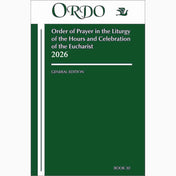From the desk of the Tar Heel disciple:
October 25, 2025
The feast day of the Apostles Simon and Jude is celebrated by the Roman Catholic Church on October 28. In that two apostles share the same feast day, it is reminiscent of the commemoration of Saints Philip and James on May 3, and of Saints Peter and Paul on June 29. Western tradition holds that the major part of the remains of these two apostles are located in the altar of St. Joseph at St. Peter’s Basilica. The arm of St. Jude, taken from the remains at the Vatican and encased in a special wooden reliquary in the shape of an upright arm giving a blessing, was brought to more than 100 churches in the United States, including Raleigh and Cary, North Carolina, for the veneration of the faithful, from September 2023 to May 2024. The Armenian Apostolic Church counts St. Jude as the Apostle to Armenia and venerates his reputed relics at a monastery located in present-day Iran.
With both apostles, there are conflicting stories about their identities, historic ministries, and disposition of their remains. Simon, identified in the Gospels as “the zealot” is often portrayed in iconography with a large saw, indicating the tradition that his martyrdom, possibly in Persia (Iran), included his being cut in half with such an instrument. Judas, or Jude as he is remembered in English so as to avoid any confusion with the other Judas (Iscariot), and also called Thaddeus, is sometimes shown with a club, also a possible instrument of his death, cited in some sources as having been carried out in the Roman Province of Syria, about 65 A.D. Catholic tradition usually identifies this St. Jude with the author of the New Testament Letter of Jude.
St. Jude is also commonly portrayed with an image of the face of Jesus Christ. This symbolism stems from a legend in which the saint is reported to have utilized such an image in the miraculous healing of the King of Edessa (Upper Mesopotamia, modern-day Turkey). In our times, especially since the opening of the National Shrine of Saint Jude, in Chicago, in 1929, Saint Jude had been identified as the “patron of hopeless causes” by many clients. Despite the lack of certainty regarding many (most?) historical details, both apostles brought Jesus Christ to the nations, and from their thrones in heaven, they intercede for the Church on earth today.
Devotional items related to St Jude are available at:
https://inhisname.com/search?options%5Bprefix%5D=last&q=st+jude



